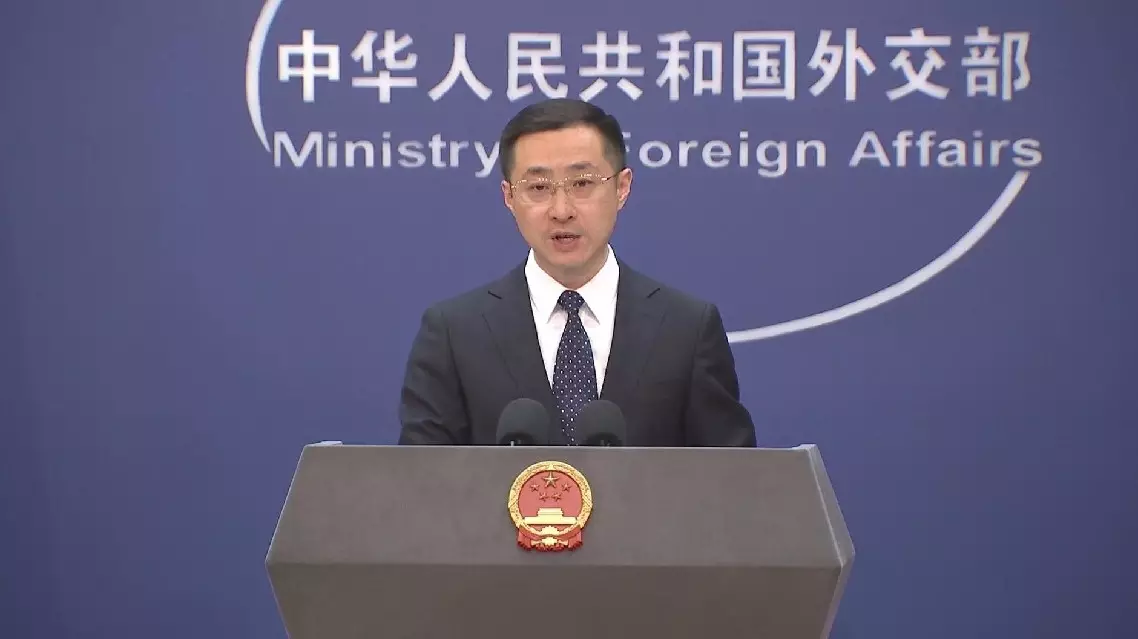The latest deal between China and the United States on the conservation of giant pandas will make a positive contribution to enhancing the friendship between the Chinese and American people, Foreign Ministry spokesman Lin Jian said at a press briefing in Beijing on Friday.
Lin made the comments in response to a question on a memorandum of understanding reached on Friday between the China Wildlife Conservation Association and San Francisco Zoo. As agreed by the two sides, San Francisco Zoo is set to receive a pair of giant pandas from China next year.
"We have noticed the relevant information released by the China Wildlife Conservation Association. We are glad to see that the two partners have reached a cooperation intention on the conservation of giant pandas. It is understood that the two sides will advance the preparatory work in all aspects and strive to ensure that a pair of giant pandas will settle in San Francisco Zoo in 2025," said Lin.
"Giant pandas are not only China's national treasure, but also popular and loved by people all over the world. They serve as emissaries and a bridge of friendship. The United States is among the first countries to cooperate with China on the conservation of giant pandas. Since the 1990s, with the joint efforts of Chinese and American researchers, 17 giant panda cubs have been successfully bred and survived, making positive contributions to the conservation and reproduction of giant pandas," he said.
"The two sides have jointly conducted research on the conservation of giant pandas in the wild, and on their breeding and disease prevention and control, and on their medical treatment, overcoming a series of technical problems. This has promoted scientific and technological exchanges and capacity building in the conservation of giant pandas and other endangered wildlife species, and played a positive role in raising the overall level of giant panda conservation, promoting heart-to-heart links between the two peoples, and enhancing people-to-people friendship," said Lin.
"We have learned that the cooperative research this time will continue to give full play to advantages of collective wisdom of the two sides and their resource pooling and knowledge sharing, further enhance the capacity and level of conservation of endangered species and biodiversity, and make a positive contribution to enhancing the friendship between the people of the two countries," he said.

FM spokesman on China-US panda conservation deal
The year of 2024 marks the 75th anniversary of diplomatic relations between China and Hungary, with Shanghai highlighting the significant impact of Hungarian culture, exemplified by poet Sandor Petofi and architect Laszlo Hudec.
A special program on China Global Television Network (CGTN) that aired on Thursday opened with a reflection on the powerful words of Sandor Petofi, a revered 19th-century Hungarian poet.
His lines "Liberty and love. These two I must have. For my love, I'll sacrifice my life. For liberty, I'll sacrifice my love," resonated with Chinese audiences, largely due to the translation efforts of Lu Xun, a pivotal figure in modern Chinese literature.
In 2007, to commemorate this deep historical connection, the Hungarian government donated a sculpture of Sandor Petofi to Shanghai's Lu Xun Park.
This statue not only symbolizes the enduring friendship between the two countries but also highlights the cultural bridges built by figures like Lu Xun, who introduced Petofi's profound words to Chinese readers.
Another notable Hungarian, the Slovak-Hungarian architect Laszlo Hudec, spent approximately three decades in Shanghai from 1918 onwards, leaving an indelible mark on the city's architectural landscape.
He designed over 60 buildings, significantly enriching Shanghai's skyline with a blend of European architectural styles.
Bence Lengyel, a Hungarian student pursuing his postgraduate degree in international relations at Renmin University of China in Beijing, outlined Hudec's architectural contributions.
"So, basically this Wukang Mansion is located in Shanghai's former French concession area. And this building was built in 1924, and it was celebrated for its unique Renaissance style. And here, we can see some pictures how does the building looks from the inside. Because now, it still operates as these apartments. So people are still living in this big building, so it is forbidden for visitors to enter. But thanks to these pictures, we can get a small insight how does this building look from the inside," Lengyel explained.
The journey through Hudec's legacy also includes the Grand Cinema, designed in 1933 and recognized as a pioneering example of Art Deco in China.
Lengyel shared a personal memory: "One of my highlights during my five years living in China was definitely when I have visited the Grand Theatre here in Shanghai with my friend. Because four years ago, when I was studying in Shanghai, I was studying Chinese and we went in to watch a movie in Shanghainese. So we came to this theater and right after the movie has ended, we got out of the theater and we saw that big plaque right next to the front door. And that was the time when we realized that this Grand Theater was also built by Hudec Laszlo."
Adjacent to the cinema stands the Park Hotel, another Hudec masterpiece, which was Shanghai's tallest building for over five decades.
"So basically, this Park Hotel is one of my favorites. And after reading so much about his journey from Hungary to becoming a well-celebrated architect in Shanghai, I think it's truly inspirational and I'm happy that I can share the same cultural heritage as him. And I think his own ideas and designs [are] what made him so famous in Shanghai," Lengyel reflected.
Decades of cultural exchanges between China and Hungary have significantly enriched Shanghai's architectural and cultural landscape, deepening the understanding and appreciation of Hungary's contributions to China.

China celebrates Hungarian cultural legacy through poetry, architecture










